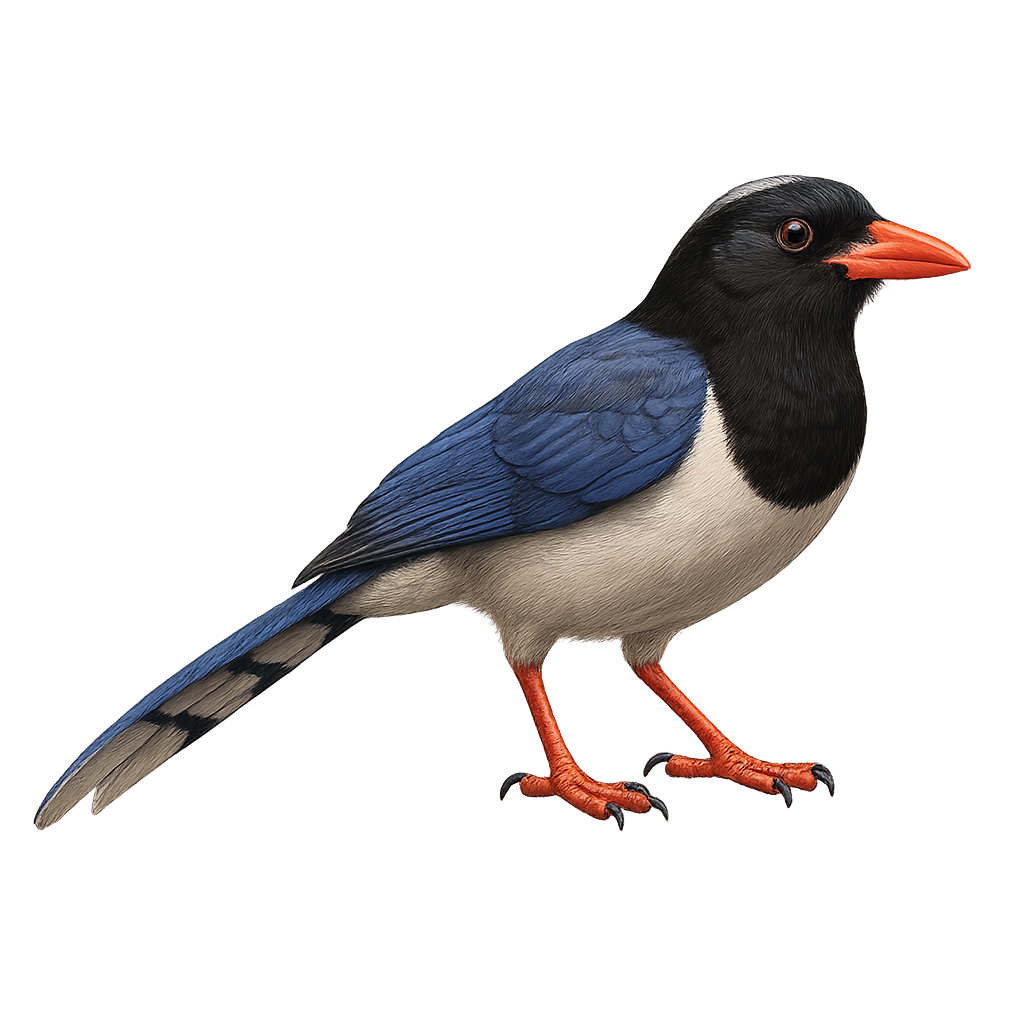Your wildlife photography guide.
Explore the red-billed blue magpie in detail, study its behavior, prepare your shots.
Where to observe and photograph the red-billed blue magpie in the wild
Learn where and when to spot the red-billed blue magpie in the wild, how to identify the species based on distinctive features, and what natural environments it inhabits. The WildlifePhotographer app offers tailored photography tips that reflect the red-billed blue magpie’s behavior, helping you capture better wildlife images. Explore the full species profile for key information including description, habitat, active periods, and approach techniques.
Red-billed Blue Magpie
Scientific name: Urocissa erythroryncha

IUCN Status: Least Concern
Family: CORVIDAE
Group: Birds
Sensitivity to human approach: Suspicious
Minimum approach distance: 10 m
Courtship display: March to April
Incubation: 17-19 jours
Hatchings: March to May
Habitat:
Forests, wooded areas, hills, valleys
Activity period :
Primarily active during the day, with peak activity in the morning and late afternoon.
Identification and description:
The Red-billed Blue Magpie, or Urocissa erythroryncha, is a striking bird known for its vibrant plumage and long, bright red bill. It is primarily found in the forests of the Himalayas and wooded areas of Southeast Asia. This bird is easily recognizable by its vivid blue feathers, long tail, and black and white wings. The Red-billed Blue Magpie is a social bird, often seen in small groups. It feeds mainly on insects, fruits, and small vertebrates. Its song is varied and melodious, making it a favorite among birdwatchers. Although generally wary of humans, it may approach human settlements in search of food.
Recommended lens:
400 mm – adjust based on distance, desired framing (portrait or habitat), and approach conditions.
Photography tips:
To photograph the Red-billed Blue Magpie, it is advisable to use a telephoto lens of at least 400mm to capture detailed images without disturbing the bird. Look for areas where these birds are active, such as forest edges or clearings. Be patient and discreet, as although this bird is social, it remains wary of humans. Early morning hours are best for soft, natural light. Use a tripod to stabilize your camera and achieve sharp shots, especially when photographing from a distance.
The WildlifePhotographer App is coming soon!
Be the first to explore the best nature spots, track rutting seasons, log your observations, and observe more wildlife.
Already 1 431 wildlife lovers subscribed worldwide

